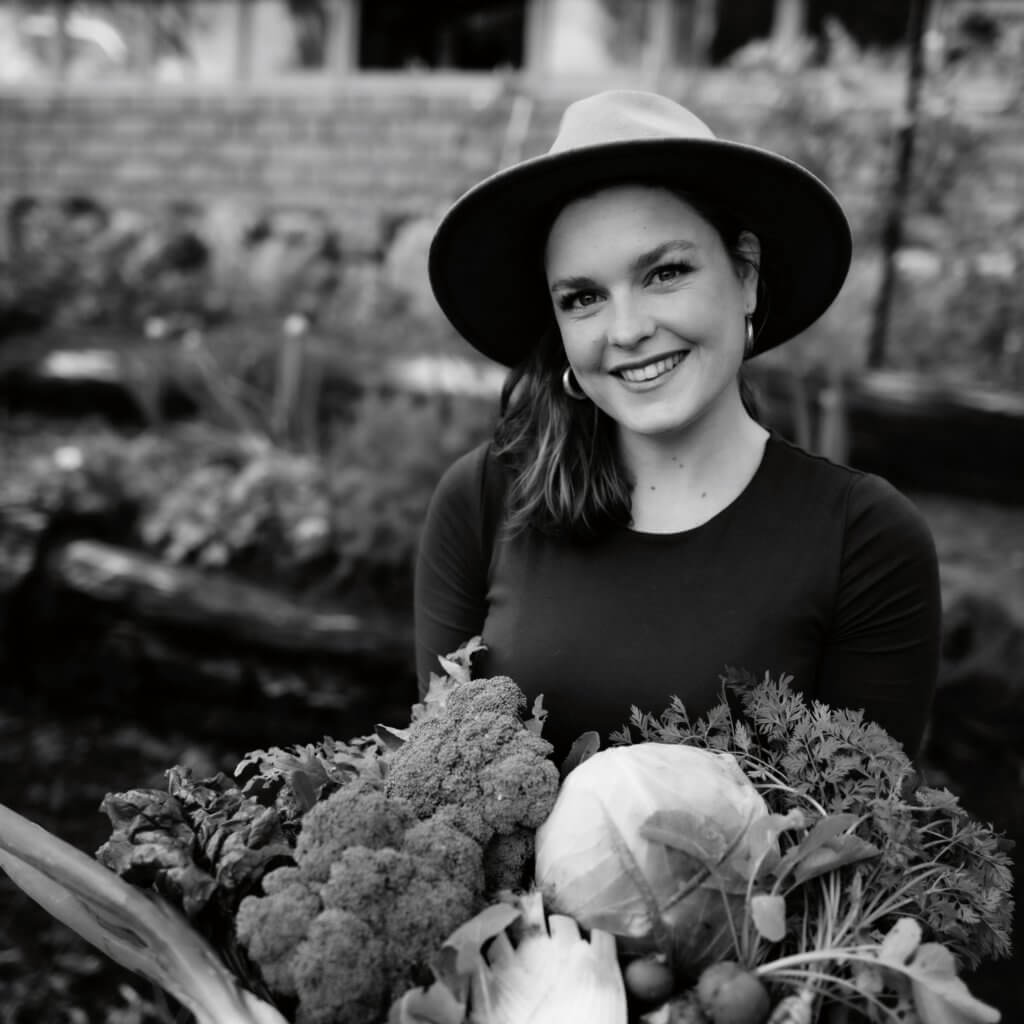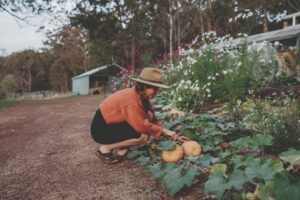
Katie White


If you want to get your gut in order, Dr Will Bulsiewicz is the expert to help you sort out fact from fiction. This is the gut-health cheat sheet...
In the fast-paced and demanding world we live in, finding moments of stillness and calm can be challenging. In an attempt to find a little peace...
Soft, sweet cinnamon-spiced dough is topped with a luscious cinnamon buttercream spread, then braided to create the stunning swirled effect in...
Fact: you don’t need eggs or dairy to make mouthwatering quiche. This beautiful recipe by Amanda Logan uses silken tofu, chickpea flour, and...
Who doesn’t like diving into a tray of hot, cheesy nachos? Delicious, fool-proof, and a crowd pleaser. We’ve even thrown in our ‘not-cho’...
Somewhere between a smoothie and ice cream, this pumpkin pie nice cream tastes divine and makes for a refreshing, nutritious breakfast, snack, or...
A colourful array of veggies combine with succulent tofu strips and fine kelp noodles in this classic Asian dish that is packed with flavour,...
In this recipe, the musky, piney flavour of saffron is complemented by earthy, smoky paprika and garlicky sweetness. It’s a taste of heaven.
Start your day the gut-loving way with this delicious and satisfying bircher (aka overnight oats) recipe by Jacqueline Alwill.
Spraying sheets and pillows with calming scents can be a wonderful aid to slumber
The next time you go for a walk, discover the wonder of the everyday world around you
A skincare routine can be a way to nourish yourself inside and out
When the clouds converge, practise gratitude for the smallest of glimmers, and learn to dance in the rain.
Veganic gardening uses plants to grow plants, and values all living things.
While you may be aware of how animals are exploited in the food, fashion, and entertainment industries, you may not have considered their use in horticulture. But animal products are relied upon by most home gardeners as well as commercial growers.
The same reasons for leaving animals off our plates also apply to leaving them out of our gardens. These include the ethical and sustainability issues related to animal agriculture. Veganic gardening is a way of growing food or maintaining your garden with as minimal harm to animals as possible and without relying on their by-products. Luckily, just as all nutrients needed to fuel our bodies can be found in plants, all nutrients required to grow plants can be found in plants, too.
The most used animal-derived fertilisers include manure, blood and bone, and fish emulsion. These products are used to increase soil nutrients and organic matter, and to inoculate the soil with bacteria. However, we can substitute these animal products with compost. Composting also reduces the amount of rubbish we send to landfill in the form of food waste.
Start by keeping a container in the kitchen for all your banana skins, veggie peels, and unwanted leftovers. These additions are a good source of nitrogen. Newspapers, tissues, cardboard, and dry leaves can also be added to your compost to increase its carbon content. Ideally you want a 30:1 ratio of carbon to nitrogen.
Plants also need access to minerals and trace elements. Just as seaweed provides this in our diet, it can do the same for our plants. Grab a bag of kelp next time you’re at the beach, put it in your compost or soak it in water for a few weeks, then water your plants with this ‘tea’ as a mineral top up. If you don’t have access to the beach, you can buy various plant-based seaweed fertiliser products from the nursery.
When making additions to your compost it helps to remember that anything plant-based which was once alive (plants and trees etc.) is made of organic matter and can thus be composted. The only things you want to avoid putting in there are citrus skins and onions, as these can repel worms – and worms help to speed up the compost process.
Plants need adequate nitrogen to flourish, which is why animal products such as blood and bone are so popular among avid gardeners. The reason blood and bone products are so high in nitrogen is because animal products are rich in proteins, which are made up of amino acids, a nitrogenous compound. However, these amino acids can also be found in abundance in plant foods such as legumes. Turning to legumes to replace animal-derived nitrogen in our gardens makes good sense.
Legumes have the most amazing ability to capture nitrogen from the air, thanks to their association with rhizobia bacteria. These bacteria live in small growths, called root nodules, on the ends of the plant’s roots. These visible nodules are a powerful fertiliser if left in the ground, so when growing legumes, we should chop the plant off at ground level at the end of its life cycle. This method is called a ‘green manure crop’ because it literally replaces manure with plants to achieve the same goal of adding nutrients to the soil.
To do this in your own garden, buy a handful or two of any whole legumes you like, sprinkle them over a cleared area, cover them with soil and water them in. Beans that fit the bill here include chickpeas, black beans, broad beans, or a mix of them all. These can be purchased at a bulk food store. Water them regularly and watch them grow tall and strong. When they have flowered, chop them back down to ground level and use a hoe to bury the tops or otherwise compost them.

If we want to grow food organically and reduce our reliance on inputs, we must create a closed loop system within our gardens by recapturing as many nutrients as possible. For example: if you harvest a broccoli, put the stalk, leaves and bits you don’t use in the compost. To simplify even further, just dig a hole and bury the crop residue! Whatever you do, don’t throw anything away.
Also, being compassionate people, we probably don’t want to go around squashing every bug we see nibbling on our prized veggie patch. When it comes to pest control, focus on prevention over cure. Many pests occur if a crop is grown at the wrong time of year. A good example is the cabbage moth, which will only come out to eat our brassicas in the warmer months. Hence, growing broccoli in winter helps to avoid a moth situation!
Another key factor to consider is mixing crops. In nature plants don’t occur as monocrops, so when planting out different seedlings, spread them around and mix them up a bit. This makes it harder for bugs to recognise and concentrate on one crop. Another way to deter pests is to pulse up some chilli and garlic, mix it with water, and spray this on the leaves of your plants.
***
Compassionate gardening can help us create and grow our gardens in a way that does not require animal products and helps us further align our actions with our ethics. Eradicating all forms of animal exploitation will help us achieve a truly kind world – and while this may start in our kitchens, it can extend to other parts of our lives and into our gardens too.
Images: Olive Wood Vegan
If you want to get your gut in order, Dr Will Bulsiewicz is the expert to help you sort out fact from fiction. This is the gut-health cheat sheet...
In the fast-paced and demanding world we live in, finding moments of stillness and calm can be challenging. In an attempt to find a little peace...
Spraying sheets and pillows with calming scents can be a wonderful aid to slumber
The next time you go for a walk, discover the wonder of the everyday world around you
A skincare routine can be a way to nourish yourself inside and out
When the clouds converge, practise gratitude for the smallest of glimmers, and learn to dance in the rain.
Stuffed butternuts make a glorious seasonal dinner centrepiece in this hearty and flavoursome dish by Katie from Olive Wood Vegan. If you don’t have time to pre-sprout the barley, this step is optional – although recommended!